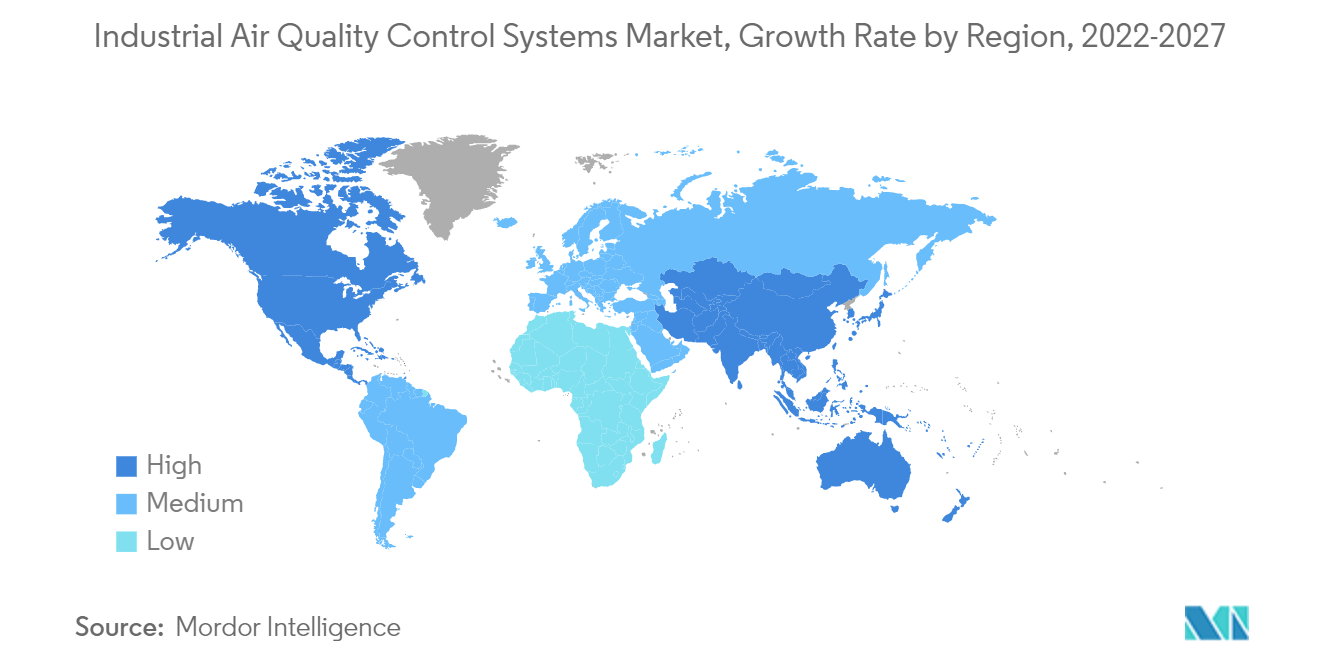Market Trends of Industrial Air Quality Control Systems Industry
This section covers the major market trends shaping the Industrial Air Quality Control Systems Market according to our research experts:
Power generation Industry is Expected to Dominate the Market
- In the power generation sector, power plants are the largest sources of emission of SO2, mercury, and acid gases. In the power sector, coal accounts for around 98 per cent of SO2 emissions, 94 per cent of mercury emissions, 86 per cent of NOx emissions, and 83 per cent of fine particulate emissions. Also, coal is the world's largest single source of electricity, set to still contribute 22 per cent in 2040.
- Coal accounted for 36.5 per cent of global electricity generation in 2021. This was up from 35.3 per cent the previous year, with total coal-fired electricity generation has reached over 10,000 terawatt hours. The production of harmful gases can be minimized using air quality control systems (AQCS), such as electrostatic precipitators, flue gas desulfurizers, scrubbers and mercury control systems.
- The growing concerns regarding environmental pollution and government actions to curb the same are driving the market. Also, stringent regulations, such as the Clean Air Act (CAA) and the Mercury and Air Toxics Standard, enforce the installation of systems that monitor and curb emissions to bring them to a safer level in power generation companies using fossil fuels.
- Moreover, air quality control systems (AQCS) in the power generation industry are used to clean gases emitted from thermal power plants. Numerous countries across the globe are heavily dependent on coal-fired power plants for the generation of electricity. For instance, One of the classic examples is the Zainskaya combined cycle power plant, an 858MW power plant in the construction phase in Russia. The power plant is located in Tatarstan, the expected completion year is 2023.
- Furthermore, gas-fired power generation is gaining significant momentum in the global market due to the demand for cleaner power generation and the development of a robust gas supply infrastructure in natural gas-rich countries like Russia, Saudi Arabia, Iran, and Qatar. Many upcoming power projects in the aforesaid countries are based on natural gas.
- Hence, increasing electricity generation, coupled with the changing power generation industry dynamics, is expected to drive the industrial air quality control systems market during the forecast period.

Asia-Pacific Region is Fastest Growing Region
- The growth in the industrial sector (which includes power generation, chemicals and metal processing) has influenced the demand for air quality control systems. With countries like India and China already topping the list of most polluted countries, the governments have been forced to implement various regulations for the emission standard in these countries, forcing the pathway for the implementation of AQCS in industries.
- The increasing rate of coal consumption, illegal mining have led to the deterioration of air quality. In addition, the growing per-capita energy consumption and demand for the same are the major factors responsible for the high levels of GHG emissions. To control rising emissions, the Central Pollution Control Board (CPCB) of India has implemented control norms and standards that mandate the installation of air quality control systems in all industries.
- Moreover, in August 2021, the Indian Government announced that the national ambient air quality standards would be updated in 2022. The new standards are expected to include ultrafine particulate matter which falls below PM 2.5.
- Also, in October 2021, the Indian Space Research Organisation (ISRO) and Japan Aerospace Exploration Agency (JAXA) agreed to join hands to take up activities on rice crop area and air quality monitoring using satellite data. Both agencies have signed an implementing arrangement for shared activities on rice crop area and air quality monitoring using satellite data.
- Hence, owing to the above points, the Asia-Pacific is expected to dominate the Industrial Air Quality Control Systems Market during the forecast period.


